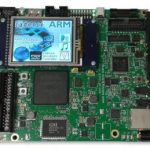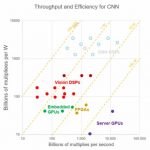The best things in life may not always be free, but they don’t have to be incredibly difficult to get to. A challenge for IoT designers has been that their bubbling excitement over the potential of their new gizmo is quickly tempered by the complexities of actually building the hardware. Not exactly what they have come to expect in … Read More
Semiconductor Intellectual Property
HBM controller IP holds the key to bandwidth
We were waiting to see what a different roster including SK Hynix and Synopsys would have to say on HBM in the latest Open Silicon webinar. This event focused on HBM bandwidth issues; a packaging session on 2.5D interposers was promised for a future webinar.… Read More
ARM vs Intel: The New War Frontiers
With Intel’s exit from smartphone processor market, the competitive zones are redefined with its rivalry with ARM. Is ARM’s domination the only reason for Intel’s exit? With no competing architecture, is ARM a monopoly in smartphone processor IP market? What are the new areas of competition between ARM and Intel? I will attempt… Read More
Network generator embeds TensorFlow, more CNNs
Research on deep learning and convolutional neural networks (CNNs) is on the rise – and embedding new algorithms is drawing more attention. At CVPR 2016, CEVA is launching their 2[SUP]nd[/SUP] generation Deep Neural Network (CDNN2) software with new support for Google TensorFlow.… Read More
eSilicon Offers Free Semiconductor IP For Universities!
It is easy to forget the importance of academia’s role in the semiconductor ecosystem but it is important not to. If you look at the DNA of the semiconductor industry you will see how dependent we are on academic research for innovation and the necessary disruption that keeps us all gainfully employed. FinFETs are the first things… Read More
10 signs on the neural-net-based ADAS road
Every day I read stuff about the coming of fully autonomous vehicles, and it’s not every day we get a technologist’s view of the hurdles faced in getting there. Chris Rowen, CTO of Cadence’s IP group, gave one of the best presentations I’ve seen on ADAS technology and convolutional neural networks (CNNs) at #53DAC, pointing… Read More
ARM and Mentor Enabling the Ecosystem for the Backbone of IoT
Charlene Marini (VP of ARM Segment Marketing) did a nice presentation at the ARM/Mentor Summit last month at the Mentor HQ in Fremont. I just got the slides so let me give you a quick summary from my notes. It was a very good presentation on IoT and emulation which in my mind is the new simulation. I also attended an IoT panel at #53DAC that… Read More
Webinar alert – ARM and Enea explore NFV
In the Open Source IP panel at 53DAC, we explored the idea of workload-optimized servers. One panelist observation stuck with me: if one chooses to deviate from the Intel-based norm in a data center, you essentially have to spray paint a line around any boxes that don’t comply.… Read More
Which CEVA DSP to use to Support Multimode Connectivity Requirements of IoT and M2M?
The definition of IoT systems is moving fast: the simple definition of a connected (to Internet) device in the early days is becoming more complex and also more precise. IoT or M2M devices are expected to support the full range of emerging cellular protocols such as LTE MTC Cat-1, Cat-0 or Cat-M, as well as the suite of Low Power Wide… Read More
The Business of the Semiconductor Business, Part One: What Happened?
This is the first of an occasional series of articles on the semiconductor industry. Many column inches have covered industry consolidation and in this first article, I aim to explain how the industry reached this point. Later articles will cover subjects including China, joint ventures, emerging players like Brazil and Vietnam,… Read More






Quantum Computing Technologies and Challenges